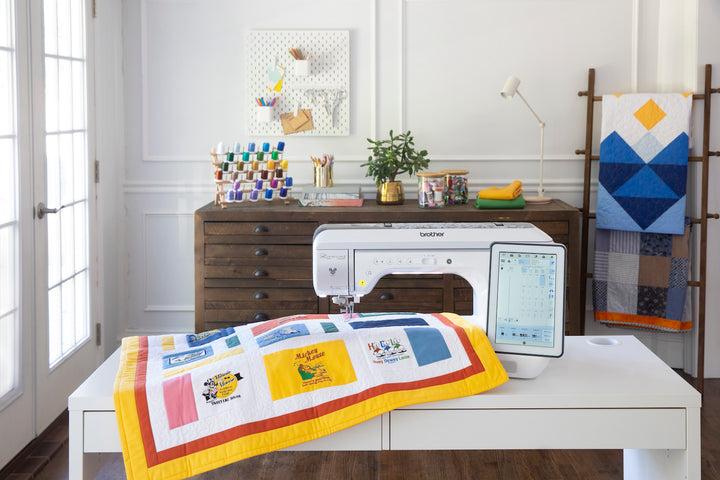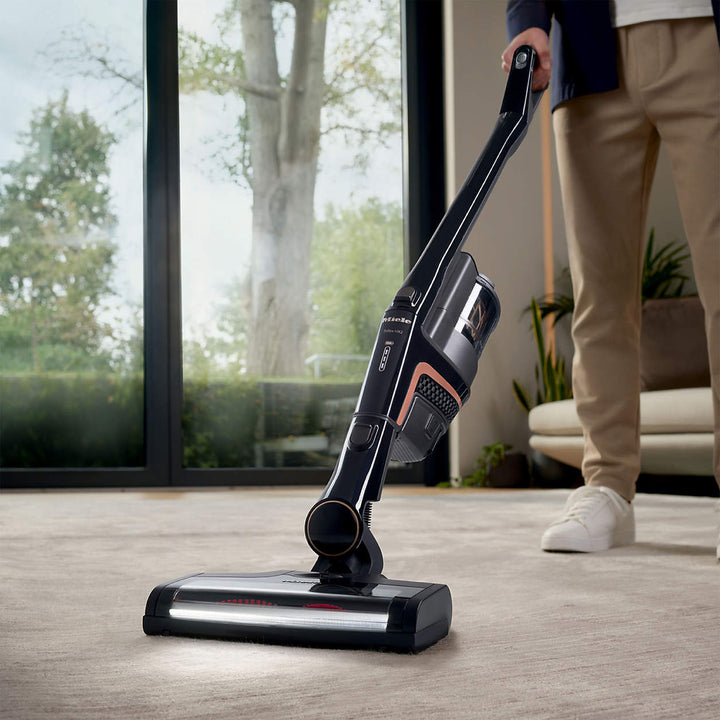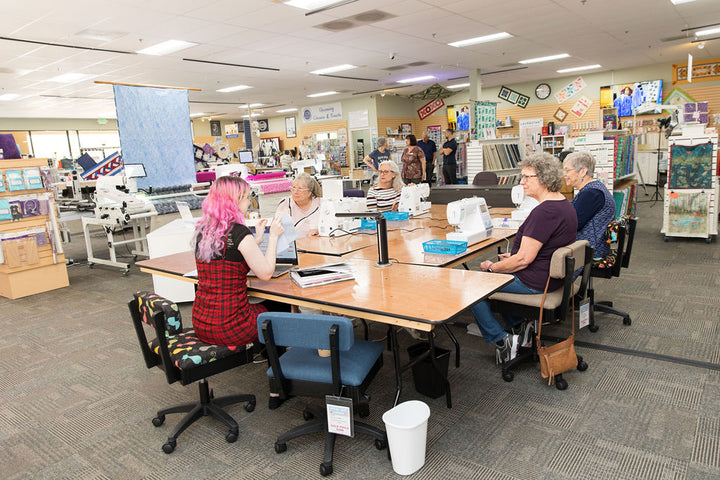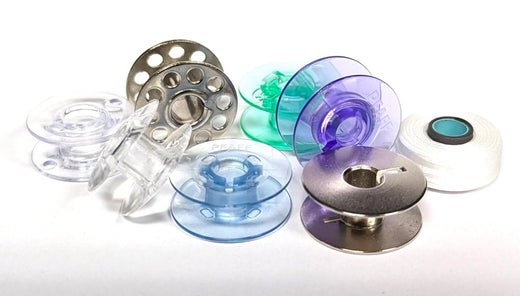What is a Bobbin?
A bobbin is a small spool of thread that holds the lower thread of the sewing machine.
Bobbins are located beneath the needle plate on your machine, inside the bobbin case, and they form the bottom of the stitch, in both sewing and embroidery. Bobbins can vary in size, quality, type, and application. There will always be the best type of bobbin for you to use in your machine, and we are here to help!
What Are the Different Bobbin Sizes?
Your machine has a specific bobbin that it needs to perform at its best. There are nuances even within the individual sizes of bobbins. Just because a bobbin fits in your machine does not mean it is the correct one to sew with. It is important to make sure that you are using the correct bobbin, that is designed for your machine in order to get the best results out of your machine.
For MOST current domestic sewing, quilting, and embroidery machines, there are three main bobbin types: Class L, Class 15, and Class M. As machines advance more and more, there are more individual sizes being created, but those three are the most common.
- Class 15 bobbin: This is the standard size for most Brother, Baby Lock, Juki, Janome, Elna, Bernette, and current Singer machines (older singer machines will use a Class 66). Class 15 bobbins are about 7/16” high and typically are plastic.
- Within the Class 15 bobbins, there are ones that have a perfectly flat side, and ones that are ever so slightly curved. The slightly curved are for the Brother and Baby Lock machines, and the perfectly flat are for all of the other brands/models that use a Class 15.

- Class L bobbin: This size bobbin is most common in older Pfaff and Viking machines, as well as the Brother and Baby Lock multi-needle machines. Class L bobbins are about 5/16” high. There can be a little variation between the size in Class L machines, depending on the individual model. Don’t worry, we will cover that below!

- Class M bobbin: This is the standard size bobbin for longarm quilting machines, either sit down or on a frame. “Class M” refers to the size itself, but each individual brand may have a very slightly different construction, so it is always important to confirm if a different brand will work in your machine. The Class M bobbins are 1 cm high.

Older Singer machines use a Class 66 bobbin. This is another size, and you may see them in plastic or metal. They have a very visible curve along the flat side of the bobbin.

Bernina bobbins are a class all of their own. They come in four different sizes: CB, two different Rotary, and B9/Bernina. These bobbins are specifically designed for the Bernina machines and should not be used with other machines.

Bobbin Types:
Standard: Standard bobbins generally come in a pack of five or ten, and you wind your own thread onto it using the bobbin winder on your machine. Standard bobbins are a higher quality, and you can sew with them and then rewind them again and again. You never want to wind multiple colors of thread on top of each other on a single bobbin. Bobbins should be wound with one piece of thread, from start to finish.
Unless you only sew with one color of thread you will most likely have multiple bobbins wound in different colors, in order to match the various threads you’re using for different projects. If bobbins are just stashed in a little container or a bag, they can quickly become a tangled mess of thread. To avoid the thread winding off the bobbin and knotting with other threads, you can use something to hold the thread in place on the bobbin when not in use in your sewing machine.
- If you just want to hold the thread onto the bobbins individually, you can use something like these Tulip Clamps. They work with the majority of bobbin sizes.
- If you have a larger number of bobbins, you would benefit from something like the Stack N Store Bobbin Tower, or the Bobbin Saver Ring. They are made of a flexible material that the bobbins can nestle into, preventing the loose ends from unwinding.
Pre-Wound Bobbins: Pre-wound bobbins are becoming increasingly popular. These are bobbins that you purchase with thread already wound onto them. With embroidery machines especially, it is always nice and easy to just grab one and pop it into the bobbin case. You can find pre-wound bobbins to fit almost any machine, and in a variety of weights. Pre-wound bobbins will also come in a few different sizes: Class L, Class 15, and Class M. These bobbins, however, do not have the same strength and durability as the standard bobbins, so these are a single-use bobbin. Once the pre-wound thread is gone do not re-use pre-wounds and wind your own thread on them; they should be thrown away.
- Our favorite brands for pre-wound bobbins are Quilter’s Select and Fil-Tec.

Thread Types: Some pre-wound bobbins are made for quilting, and some are made for embroidery. This means the thread may vary in type or weight.
- Thread composition: You can find polyester or para-cotton poly blend thread in pre-wound bobbins, and you can use either for quilting or for embroidery.
- Thread weight: When doing embroidery, you want to use a lighter weight thread than you would use on the top of your machine. Standard top thread is 40wt, and standard bobbin thread for embroidery is 60wt. You can find pre-wound bobbins varying from 40wt all the way up to 80wt. The weight of the thread in your bobbin in comparison to the weight of your top thread can drastically alter how the stitch forms.
Magna-Glide: These bobbins are a style of pre-wound, but instead of having plastic sides, they are only a magnetic core, surrounded by thread. The magnetic core creates constant and consistent tension, which leads to more consistent stitches. Additionally, you can save the magnetic cores and ship them back to the manufacturer to recycle them!
These come in two different sizes.
-
Class L bobbins: To be used in Brother and Baby Lock multi-needle machine, or most Pfaff/Viking machines

- Class M bobbins: To be used in longarm quilting machines

Metal vs. Plastic:
For sewing machines in the past, bobbins were traditionally metal; the most common being Class 66 and Class 15. You can still find metal versions of these today. However, bobbin composition and construction has improved over time, and now they make plastic bobbins in each of these sizes.
Plastic bobbins are the preferred bobbin type for almost all domestic machines. The exceptions being multi-needle machines, longarms, and high-speed straight stitch machines. Plastic bobbins are great because they create less friction than metal bobbins in the bobbin case, and they can spin more smoothly in the bobbin case. Even if an older machine originally came with metal bobbins, 95% of the time, they are a model that will perform better if that bobbin is replaced with a plastic bobbin.
Some machines specifically come with metal bobbins:
- Multi-Needle Machines: Brother and Baby Lock multi-needle machines can use a pre-wound Class L bobbin, but you can also wind your own bobbins for them. The standard bobbins for these machines are metal.
- High-Speed Straight Stitch: These are always going to perform better with a metal bobbin.
- Longarm Machines: Standard Class M bobbins are always going to be metal. Pre-wound for these machines are paper lined or have a magnetic core, and those work great in the machines as well.
How Do I Know What Bobbin I Need?
The user manual that came with your sewing machine will state what type of bobbin should be used in the machine. Many different sewing machine brands will have a document that shows their different models, sorted into different groups. Then they show what bobbins are compatible with which groups.
Pfaff:
- For Machine Styles A, B, C, D, E, F G
- For Machine Style J: Original, Watercolor, & Monet
- For Machine Style K: (Class 15)
- Machine Style L: Creative Icon & Performance Icon


Viking Chart:
- Smallest ones
- Machine Style 7: Original, Watercolor & Watercolor II
- Jade 20 & Jade 35: Class 15
- Machine Style 8 & 9

Bernina Chart
- CB: Machine Group A1 (910 – 933, 1004 – 1031, 1080 – 1530), B
- Rotary (8 Series): Machine Group F
- Rotary: Machine Group A1 ( 1000 – 1001, 1050 – 1070), A2, C
- B9/Bernina: Machine Group D, E


There are some brands that do not need the compatibility chart for their bobbins.
Brother/Baby Lock:
- Sewing and Embroidery Machines: Class 15-Standard (SA156 or BLG-BOB) or Pre-Wound
- Multi-Needle/Free Arm Embroidery: Metal or Pre-Wound (Class L or Magna-Glide)
- Longarm: Metal or Pre-Wound
Handi Quilter:
- Long Arm: Original Metal, Purple Metal with Storage Box & Pre-Wound
Grace:
- Long Arm: Metal
Juki:
- Sewing Machine: Class 15
- High-Speed Straight Stitch: Metal bobbins
- Longarm: Metal or Pre-Wound
Janome:
- Sewing and Flat Bed Embroidery Machines: Class 15
- HD9 (version 1), MB4 & MB7: Jumbo Bobbins
- HD9 (version 2): Metal Bobbins
Maintenance
Like most moving parts, bobbins will get old over time. If your bobbins start to look cracked or have any sort of damage to them, discard them and get a new pack. A single burr on a bobbin can cause issues when you are sewing. Give yourself every opportunity to create the most beautiful stitching possible, and don’t try to force a damaged bobbin to keep working.
Summary
The bobbin is a small but important part of your machine. It is key to ensure you are using the right size bobbin for your machine. If you no longer have the manual that came with your machine and are unsure what you need, we can help. You can always reach out to our knowledgeable team via chat on our website, email info@qualitysewing.com or call 1-800-687-5175 to figure out what is going to be the best option for your machine and your specific project at hand. We want to help you be successful in all of your sewing, embroidering, and quilting!




